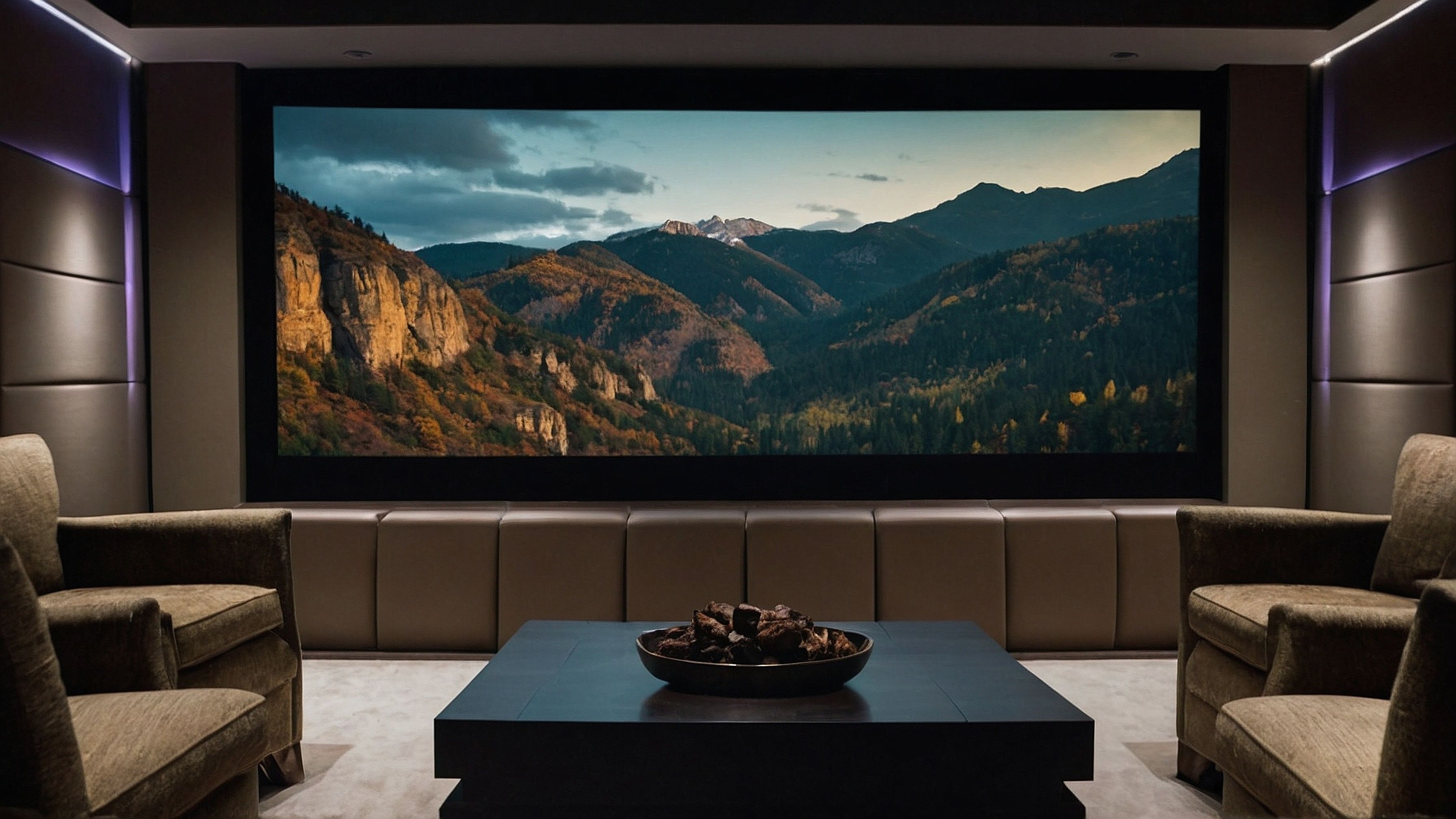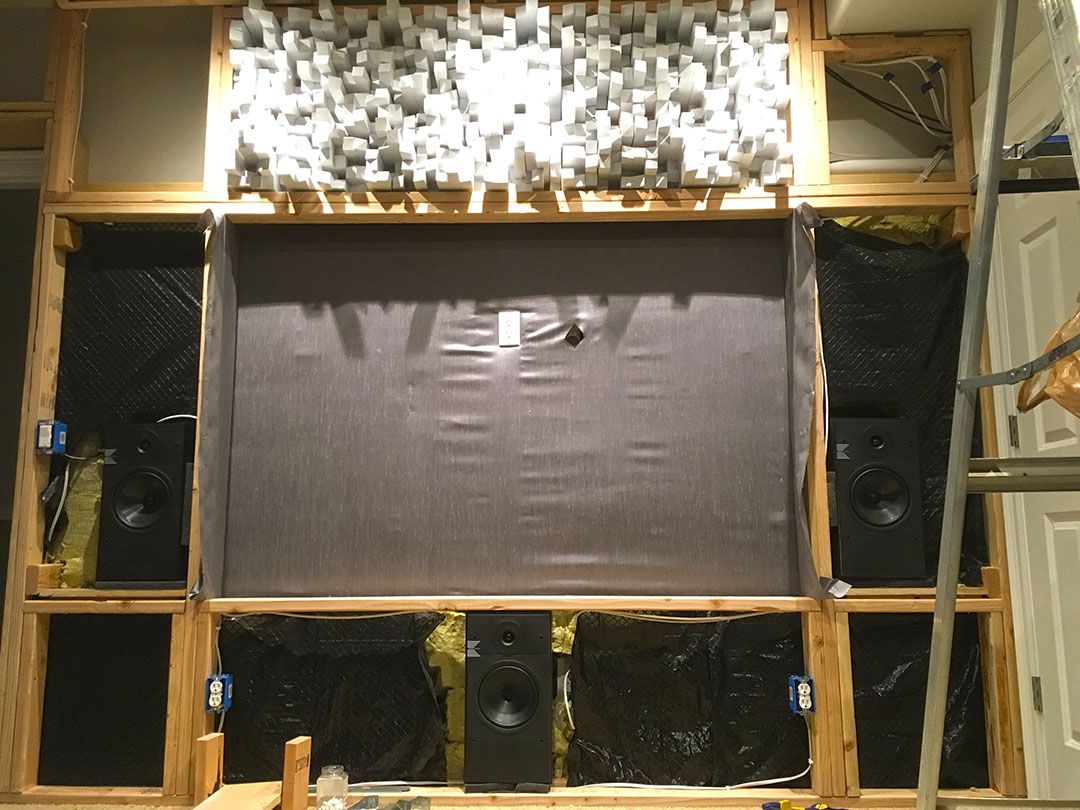
Mastering the Art of Acoustic Treatment in Your Home Theater for an Unparalleled Audio Experience
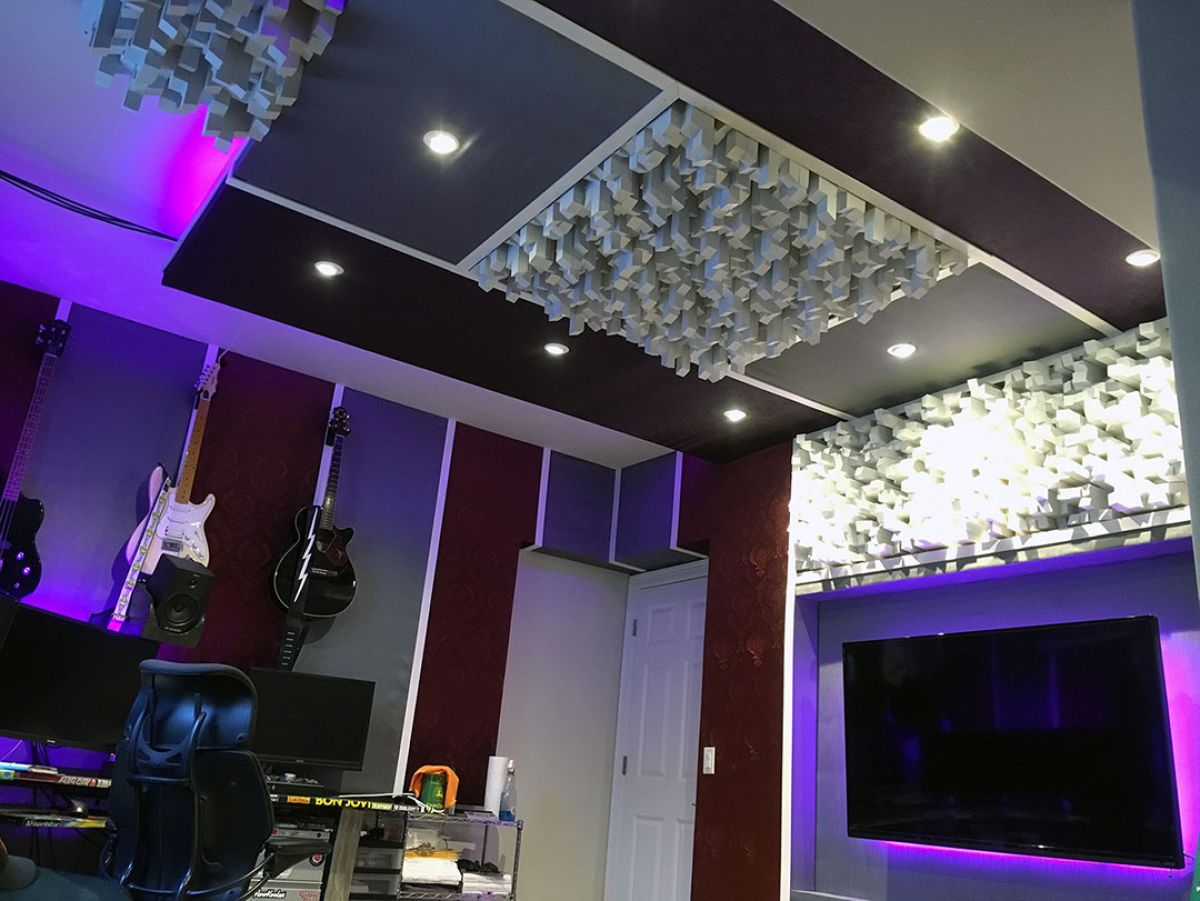
Immerse yourself in a true audiophile experience by properly treating your theater.
In previous articles, we discussed room size and shape which primarily aid in choosing screen size and how sound waves reflect within the room. When talking about theater acoustics, there’s two main concerns: the first is the quality of sound within the theater, and the second is mitigating sound from traveling throughout the rest of the home and neighborhood. In this article we’ll be discussing the first; the quality of sound within the theater.
What Is Acoustic Treatment?
Unlike soundproofing, which was discussed in a previous article, acoustic treatment are products and building techniques designed to improve the listening experience. Acoustic treatment does not prevent sound from traveling through walls and being heard in other rooms of the home – that is the process of soundproofing. Acoustic treatment absorbs, diffuses, and reflects soundwaves within a room to prevent unwanted echo, reverb, and muddied frequencies. Every room in the world has its own unique “sound” – the job of a well-crafted home theater or recording studio is to design a room where the sounds within it are as natural or “un-colored” by the room as possible. The goal is to create an environment that allows the original sound to be accurately represented.
For instance, a proper acoustically treated home theater will allow you to hear what the director heard on set, or what the director intended you to hear through post production. Likewise, when a singer is being recorded in a properly treated room, it will allow the listener to clearly hear the voice – not the voice plus all of the echoes and reverb created by a square room with flat walls.
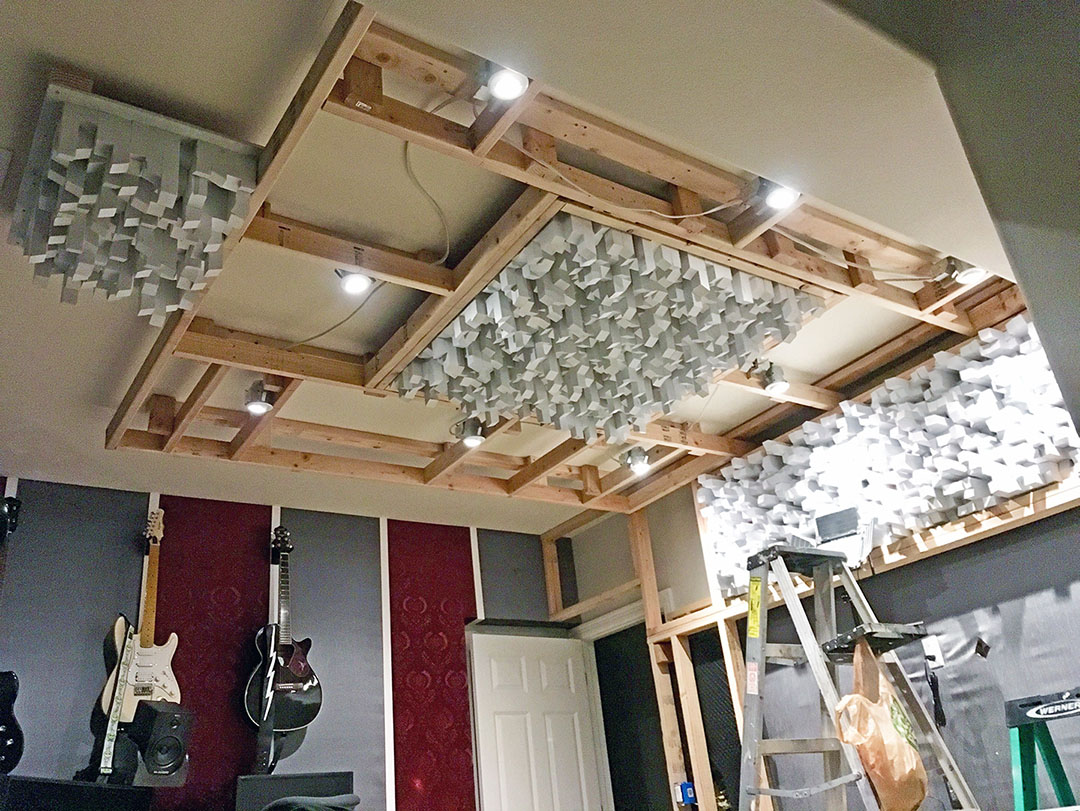
Think Acoustic Treatment Isn’t Worth It?
I will be very frank, and this may sound harsh – if you think that acoustic treatment is an overblown concept, you are flat-out wrong. If you think that acoustic treatment can be substituted by purchasing the best and most expensive speakers on the market, you are flat-out wrong. There is no debate, this is not opinion – it is scientific fact supported by math and audio engineering. The question is, at what point do you begin to experience diminished returns? When does the juice of acoustic treatment not become worth the squeeze? Any acoustic treatment will make the room sound better – where you draw the line is dependent upon your desire and budget.
Now, in this paragraph I will be a little subjective and mix in my personal experience. Very quickly, I have a lot of audio experience. I have audio engineering and professional listening experience at Electric Lady Studios, Columbia Records CBS Studio B, The Village Studios, Side 3 Studios here in Colorado, and have been an audio technician at many live shows and arenas throughout the country. In each of these situations, what makes some of these places legendary is the quality of their rooms – not the equipment within them. Equipment matters, but technology has come such a long way that you can achieve superb listening experiences within properly treated rooms with common consumer quality gear. The room is what matters.

How Do You Acoustically Treat A Room?
Every room is different and there is no formula that I can give you for acoustic treatment like I did in pervious articles regarding room size and shape. People have spent lifetimes trying to master audio engineering – and there’s good text books and essays out there for those interested. Generally, for home theaters, it’s important to closely follow the “golden ratio” as best you can when building a theater from scratch. It’s also important to include soundproofing during the build.
Acoustic treatment is then determined by your theater’s individual dimensions and shape. An audio technician or engineer uses a scientific / measurement microphone (an extremely flat mic, vastly different from common vocal or instrumental mics) hooked to a computer and takes readings throughout your theater. Contrasting data between when the room is quiet and when your sound system is in operation, the engineer can determine “hot spots” where certain frequencies gather, “dead spots”, or high reflection areas.
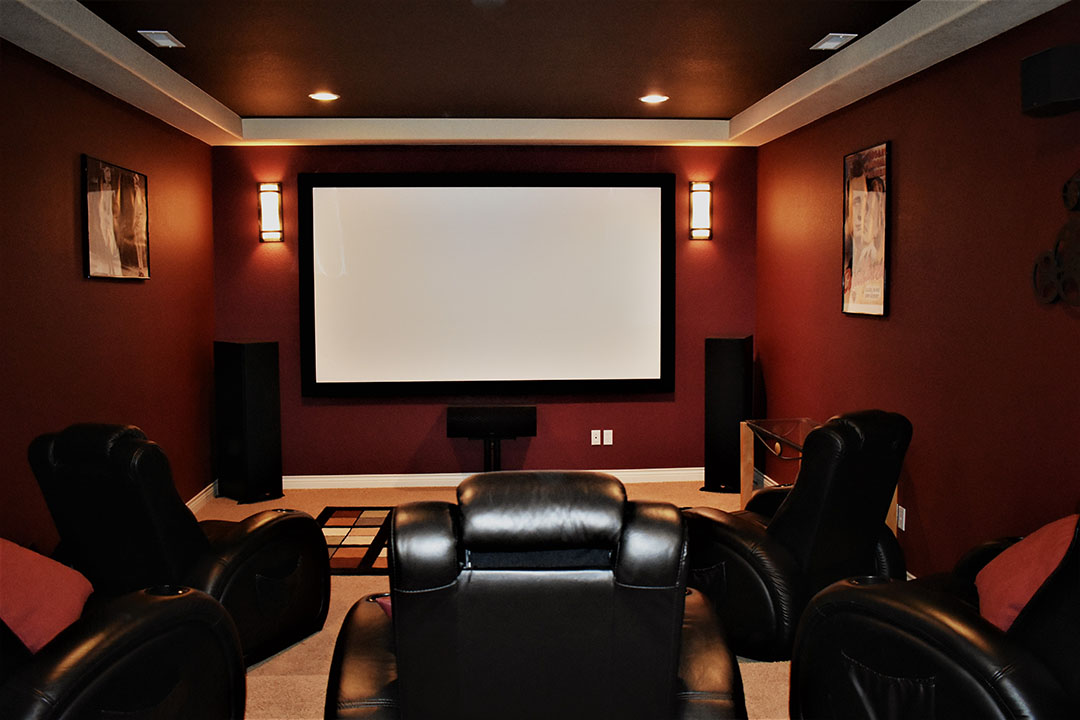
What Does Acoustic Treatment Look Like?
With the data collected above, the engineer then can determine where place absorption panels, bass traps, diffusion foam, skyline diffusion, sound clouds, or reflection panels. The data indicates to an engineer if particular frequencies need to be reflected toward the listeners, or if the frequencies need to be chopped up and redirected away from the listeners, or if particular frequencies need to be absorbed entirely. Bass tends to collect around the corners of a room, and here you’ll typically find bass traps. There is a method to the madness – and simply surrounding yourself in jagged, futuristic-looking studio foam isn’t usually the answer.
Acoustic treatment, when done properly, is usually visually striking. A lot of acoustic treatment looks like works of art and the appearance sends your theater over the top in decadence. This is where the truly custom look of your theater takes shape, and very rarely are two ever the same. Most people think that extravagant protrusions consuming entire walls is purely for aesthetics, but in reality it is serving a highly functional audio engineering purpose. I will admit, it is super cool when the two come together – function and form.
Conclusion
I don’t want to scare anyone off by thinking that they must construct a professional sound room that rivals the top recording studios and theaters in the world. Not at all. This article is merely to stress the importance of including some audio treatment into your home theater budget. It will make all the difference – please believe me. You have no idea how many theaters we’ve built, people going through the effort of soundproofing and wiring entire rooms with the latest technology, only to completely bypass any acoustic treatment.
Again, to further stress my point, I would put up a generic sound system bought over the counter at Walmart in a theater that is properly acoustically treated to any flagship professional sound system costing $25k or more. If you’re someone who is going to spend thousands of dollars on projection screens, speakers, amps, and 11.2 surround sound receivers – spend at least as much on acoustic treatment. For a bit more effort and money, acoustic treatment will dramatically improve your audio and will visually inspire many “wows” from anyone lucky enough to watch a movie with you.
To dive headfirst into home theater audio, give us a call and one of our Project Managers would be happy to help you get started.

